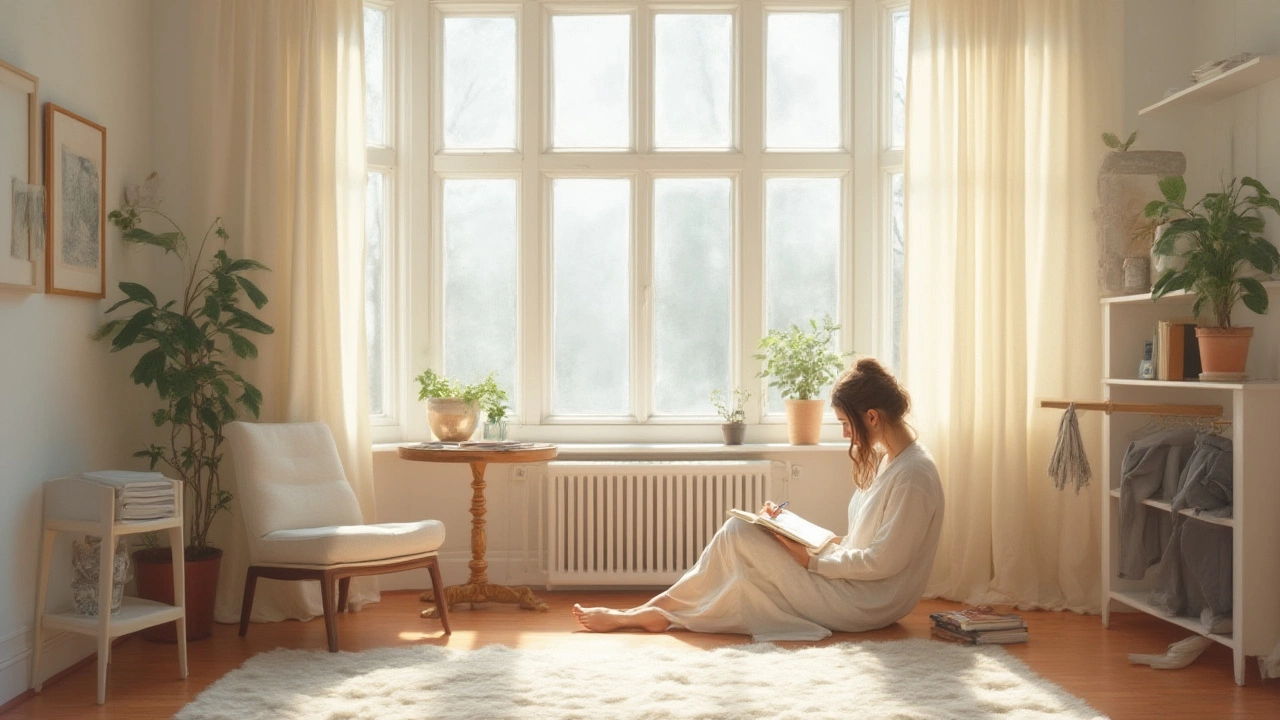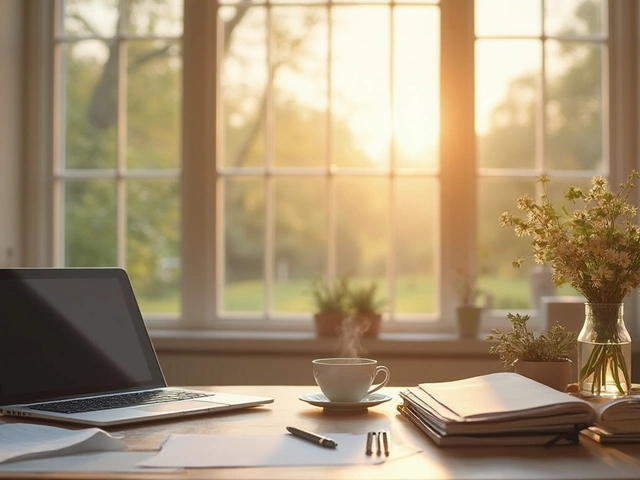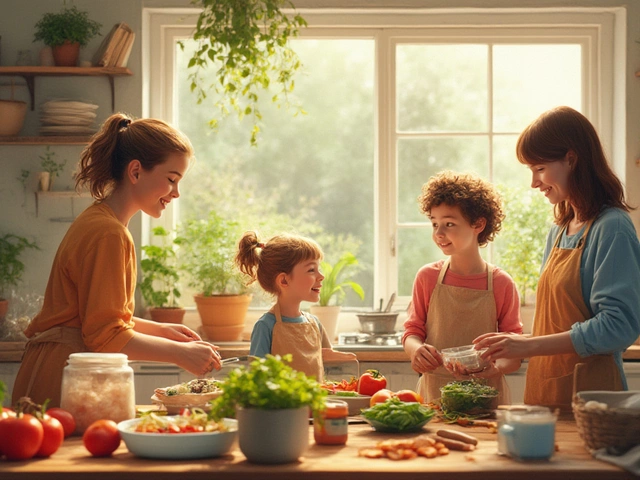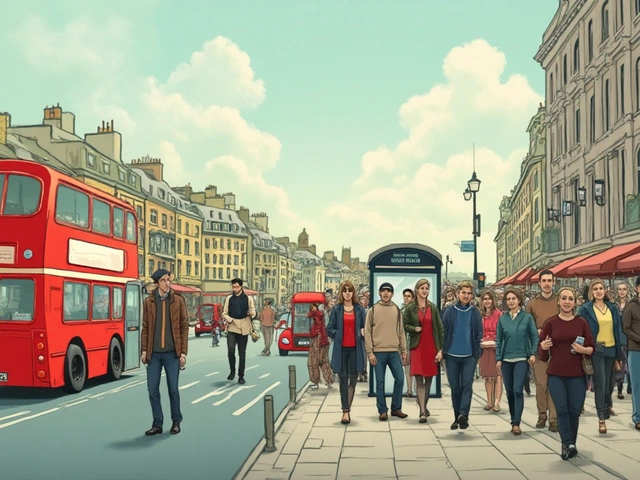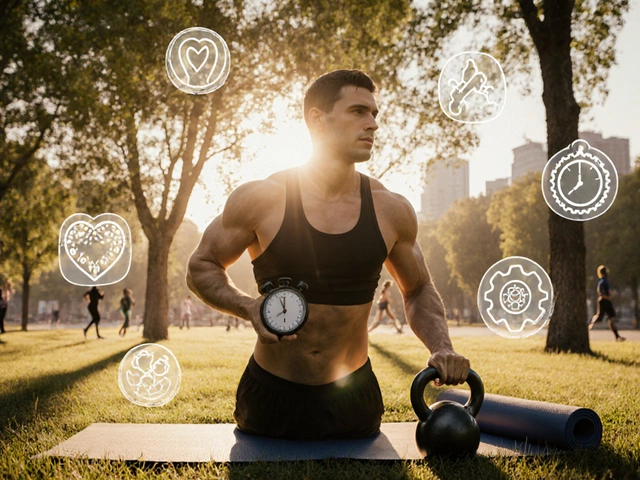If you walk into some people's homes and see nothing but a bed, a single chair, and maybe a toothbrush, you might wonder if they lost a bet. But for extreme minimalists, less isn't just more—it’s everything. This isn’t just tidying up a shelf or tossing old T-shirts. It’s a radical approach to stuff, space, and freedom. So what does it really look like when people take minimalism to the edges of possibility? Get ready to meet personalities who live with almost nothing, set records for owning the fewest items, and show us that, sometimes, having less can turn life from overwhelming to intentional.
Extreme Minimalists Who Redefined "Owning"
The internet is flooded with stories of people cutting back, but some go far beyond decluttering a closet. Take Andrew Hyde. He once famously traveled the globe with only 15 items: a laptop, one pair of jeans, a shirt, and a toiletry bag. No house, almost no clothes, and yet, he swears by the sheer lightness—with both his suitcase and his mental load. That’s the heart of the extreme minimalists movement. The fewer decisions you have to make about your possessions, the more energy you can direct elsewhere.
Another striking example: Fumio Sasaki, a Tokyo-based editor, whittled his total possessions down to just a couple dozen objects. Imagine your whole life fitting into two duffel bags. Sasaki lived without a bed and only kept the essentials—a laptop, a phone, and a single set of dinnerware. His reasoning? Every time he purchased or kept something, he asked himself if the object genuinely improved his day-to-day happiness. If it was just "nice to have," it was headed out the door.
Then there’s Rob Greenfield, sometimes called the "eco-minimalist," who landed in the headlines when he wore all his trash for a month—just to show how much waste an average American generates. He’s lived in tiny houses under 100 square feet, eaten food exclusively from dumpsters, and traveled for years with only a few items. Minimalism, for him, isn’t only about reducing overwhelm but about shrinking his environmental footprint to the teeny-tiniest tiptoe.
Looking further back, St. Francis of Assisi downsized before it was cool, giving away his family’s wealth to live in near-total poverty. While not shopping on Amazon in the 13th century, St. Francis’ approach echoes in today’s digital nomads and off-grid livers. For true minimalists, empty shelves aren’t about style at all—it’s a philosophy, sometimes a protest, and occasionally a leap into freedom by giving up almost everything that isn’t strictly necessary.
Not everyone goes down to one fork or one T-shirt—but even within the extreme camp, there’s a wild range. Colin Wright, a travel writer, famously lives out of a single backpack, moving to a new country every four months. His idea: keep only what fits in carry-on luggage, and you’re forced to keep your priorities straight. The trend among these minimalists isn’t about who can own the least for bragging rights, but about stripping life down to what matters most, whether it’s surfing the globe, environmental activism, or a kind of focused contentment mainstream consumer culture rarely offers.
While their stories sound a bit outlandish, they reveal something universal: the thrill of having nothing to lose—or dust. If you could pick just 50 things to live with, what would make the cut?
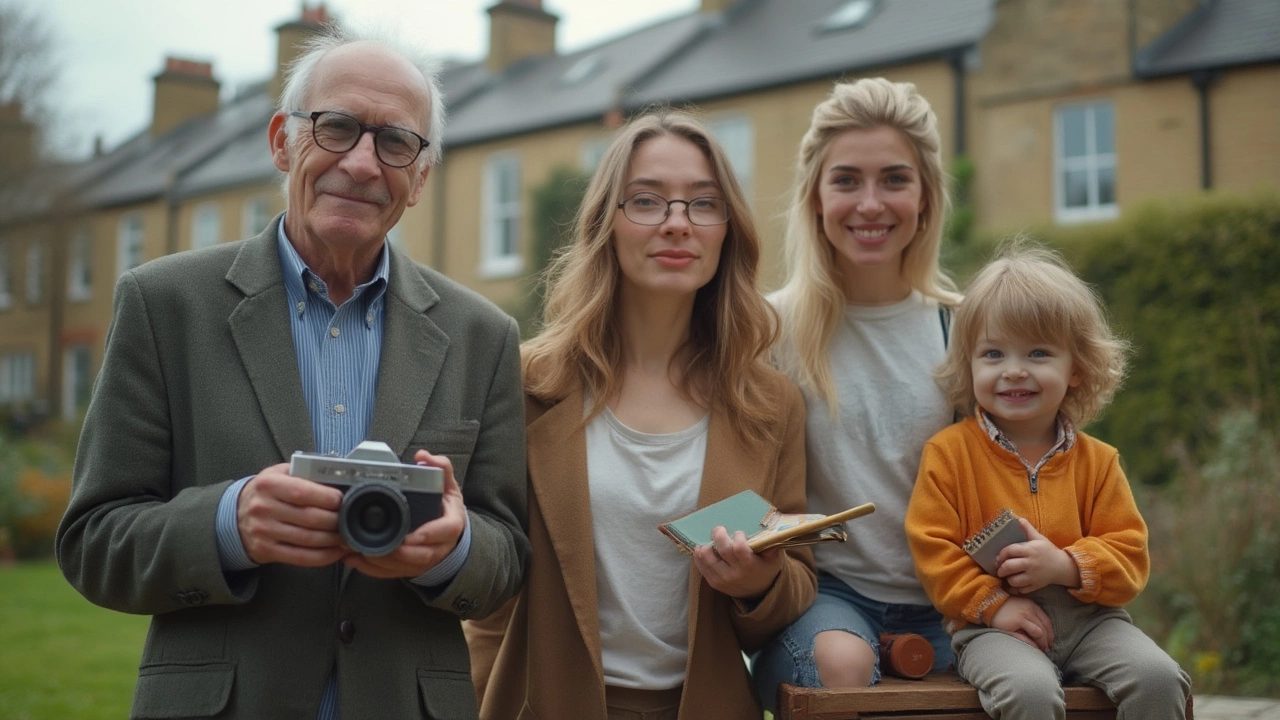
Habits, Strategies, and Surprising Challenges
For most of us, the idea of living out of a backpack or sleeping on nothing but a mat feels a bit daunting—or even unthinkable. But extreme minimalists swear by certain habits and mindsets to keep things sustainable, both emotionally and practically. For starters, many stick to the “one-in, one-out” rule: nothing comes into their home unless something goes out. Owned items are either intensely practical or spark genuine joy. Sounds familiar? That’s the Marie Kondo method’s cousin, just in running shoes.
Managing clothing is a classic challenge. Many extreme minimalists settle on a uniform, avoiding decision fatigue every morning. It’s why people like Steve Jobs were rarely seen without their iconic turtleneck. Project 333 is a common experiment, limiting yourself to just 33 clothing items for three months (including shoes and accessories). Some take it even further, keeping only two pairs of shoes—one for everything and the other for emergencies.
Technology can be either friend or foe. Living light often means digital minimalism too: zero social media apps, one device, or learning to work from community co-ops to avoid the clutter of owning office equipment. Some keep digital lives organized just as ruthlessly—one email account, one folder system, and zero notification overwhelm. They’ll tell you that fewer apps mean more autopilot for your mind.
One challenge: gift-giving and receiving. Imagine explaining to relatives at every holiday or birthday why you really don’t want any gifts. Some minimalists sidestep this with clear boundaries, asking for experiences instead of things, or insisting on no-gift pacts. It can be a social hurdle, but most report feeling a huge sense of relief once those expectations are reset.
Extremes present unexpected surprises, too. For some, letting go of sentimental items—a first-grade report card or childhood teddy bear—proves the hardest. It’s never just about stuff; it’s memories, people, places all tangled into objects. Some find ways to digitize sentimental clutter, like snapping a photo of important letters or artwork before tossing the physical copies. Others keep one “emotional shoebox” for the extra meaningful bits. Emotions need space, but not every object needs a permanent home.
Isolation can sneak in. Radical decluttering sometimes means saying no to activities with built-in buying—like shopping days, retail therapy, or hobby collecting. That’s where minimalist communities thrive, from Instagram pages that cheer each other's latest purges, to local meetups swapping tips and stories. Turns out, the fewer the objects, the deeper the relationships you tend to cultivate.
Living with less isn’t plug-and-play. Most minimalists go through trial phases: a month without shopping, a year without TV, or a week cooking with nothing but five utensils. They share their journeys online—sometimes with epic fails (accidentally donating all your socks mid-move), sometimes with eye-opening revelations (realizing you never missed the extra blender anyway). Adopting an extreme minimalist lifestyle isn’t just about emptying your home; it’s about facing habits, fears, and even relationships you maybe didn’t expect to confront.
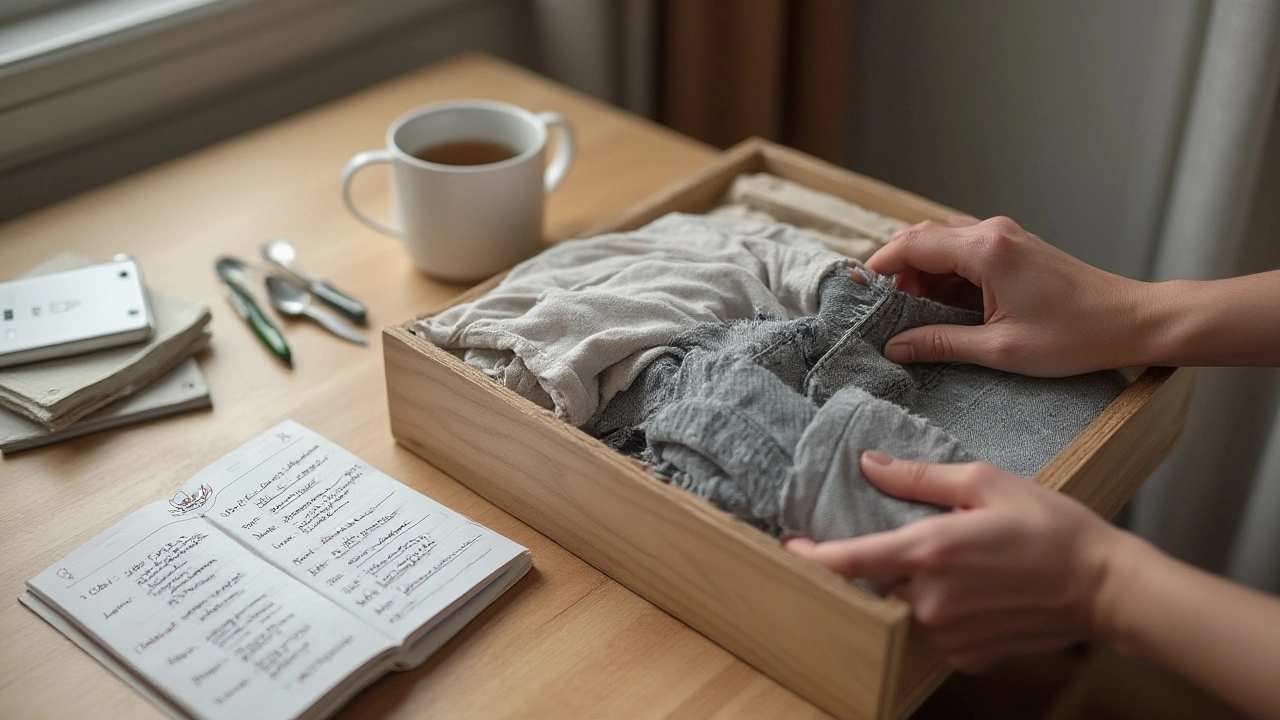
Lessons and Takeaways for the Rest of Us
You don’t have to live in a near-empty box to learn from extreme minimalists. What’s striking is how much joy, freedom, and focus people find in stripping things down. Here are a few practical takeaways you can steal from their playbook without selling all your stuff:
- Audit your essentials: Once a year, travel with only what fits into a carry-on, even if you don’t leave the city. You’ll quickly see what you miss, and what you didn’t remember you had.
- Try a month-long shopping ban. Keep a list of what you want, and revisit it at the end—most items won’t matter to you anymore.
- Simplify your wardrobe with a “uniform” or by testing out Project 333. You’ll probably get more creative with fewer pieces and feel less stressed choosing outfits.
- Rethink sentimental clutter. Photograph keepsakes, keep just one box of meaningful items, and set limits that feel freeing, not strict.
- Set up "no-gift" agreements with family and friends, trading gift-giving for shared experiences, meals, or small donations to favorite causes.
- Create one "stuff zone" in your house—maybe a shelf or drawer—and challenge yourself to reduce it each season.
- Get comfortable saying no. Extreme minimalists know that boundaries with stuff often link to boundaries with time and energy. They cut out events, subscriptions, and obligations that don't add value.
- Donate or sell what you let go. Knowing your unused things are helping others can make decluttering less painful.
Psychologists point out that it’s not about deprivation—it’s about clarity. When you stop being distracted by choices, you start really living in the moments you care about. People who’ve gone all-in on minimalism often find they’re less anxious, sleep better, save more, and discover passions buried under junk mail and knick-knacks. Life can feel supercharged with meaning, even if it looks bare on the outside.
Does that mean we all have to own 15 things or less to be happy? Not a chance. But by glimpsing the lives of extreme minimalists, it’s easier to see how stuff, money, and even square footage don’t buy contentment. What does: clearing out space—mentally and physically—for relationships, travel, creativity, or whatever ignites your spark. Maybe you’re not selling your car and sofa tomorrow, but chucking a few extras might just set your mind up for more peace. Who knew an empty drawer could feel this good?
